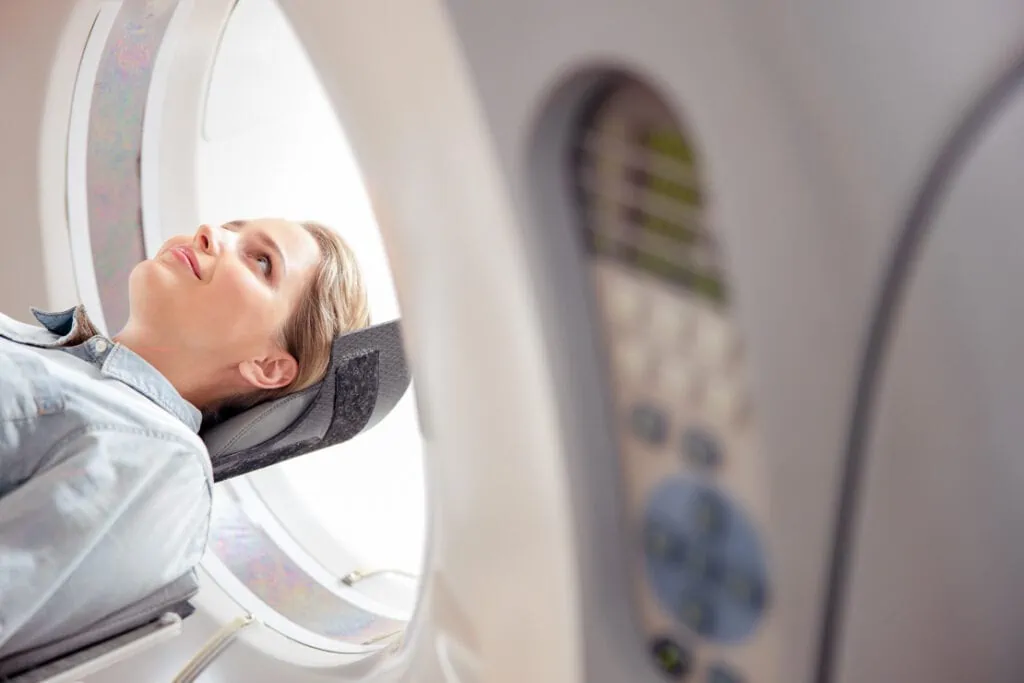- By Miriam Friedmann
Efficiently manage image data in radiology
Die durch radiologische Bilder benötigten Speichervolumina steigen konstant – durch bessere Geräte, mehr Untersuchungen, neue Anwendungen wie Video-Archivierung oder gar neue Fachbereiche wie die digitale Pathologie. Auf dieser Seite erhalten Sie drei Tipps, wie Sie Datenvolumina sparen, Ressourcen besser nutzen und damit radiologische Bilder effizienter managen.

Increasing data volumes are a key challenge in radiology
The image data volumes generated in medical facilities are continuously increasing. On the one hand, because modalities are advancing technologically and generating ever higher-resolution images in ever shorter examination times. On the other hand, the number of examinations is increasing. New application areas such as video archiving and digital pathology are also increasing the amount of data to be processed.
For IT managers in hospitals and medical practices, this is a big challenge. After all, the data must continue to be stored in an audit-proof manner, quickly available and over a long period of time. To accomplish this, even larger servers are often purchased. However, this is expensive, maintenance-intensive and requires a high level of IT expertise in-house.
Cloud as alternative to on-premise storage
A good alternative to on-premise storage is data protection-compliant storage of patient data in the cloud. This is flexibly scalable and requires no additional hardware on site.
The legal regulations for storing medical data in the cloud create the basis for this and are constantly evolving. For example, Bavarian legislation has allowed the cloud storage of patient data since June 2022, meaning that medical facilities are now permitted to process medical data outside the respective facility.
Legally compliant data storage in the cloud
To capture, store and manage data in a legally compliant manner, hospitals and medical practices should work with established cloud providers. In this way, they can both benefit from the technical advantages of cloud technology and comply with the legal framework. It is also important to rely technologically on players that enable compatibility with other systems and can ensure the integration of other future solutions (AI, digital reporting tools, dose management).
When using scalable, cost-efficient cloud archive solutions, it pays to store the relevant information and data in standard formats (such as DICOM, PDF, etc.). This ensures that existing capacities are used efficiently and long-term usability is guaranteed.
Speichervolumen von radiologischen Bildern reduzieren
In principle, patient data should be handled carefully and sparingly. This data minimization is also anchored in the GDPR. The seemingly contradictory increase in data in radiology is primarily due to ever higher image quality and not to the storage of additional information.
Accordingly, there is potential for savings in the storage and archiving of individual studies in order to reduce the total amount of storage and use existing resources more efficiently.

Tip 1: Save DICOM images compressed
Within the DICOM standard, you can compress data without loss. This allows you to reduce the storage volume by approx. 50 percent.
In order to save further data volume and at the same time meet medical and radiation protection requirements, the German Consensus Conference has defined compression factors. As a result, diagnostic image quality is preserved even with lossy compression of DICOM medical image data.

Tip 2: Optimizing technical image parameters
Further potential for reducing the data volume lies in three technical parameters of the images, which can be configured on the modalities: The resolution, the gray value depth and the slice thickness.
For example, it can be checked whether the thin-layer of CT images should also be stored in the long-term archive or whether it is sufficient to keep them in temporary storage for a limited time.

Tip 3: Check storage size of videos
The higher resolution of video recordings such as Ultra HD videos for ultrasound examinations increases the storage requirements enormously. This also applies to multiframe images from CTs or angiography stations.
When renewing the device inventory, it is advisable to ensure that multiframes and videos are archived in compressed form in the device settings. Uncompressed storage can lead to an unwanted multiplication of the storage volume.
More flexibility through cloud archives
If the data volumes are too large to archive with existing on-premise storage despite the measures taken to reduce the data volume, cloud-based archives such as that of the Telepaxx Medical Data Cloud (TMD Cloud) are an option.
This can be flexibly expanded, is usually more cost-effective than purchasing your own hardware, and is also compatible with all PACS and modalities. This relieves the staff in the IT departments of medical facilities and gives them a high degree of flexibility. The TMD Cloud also offers the advantage that further modules can be easily connected. Examples include a browser-based web viewer, a sharing module or an AI connection.
Data strategy for digital business processes
No matter how hospitals and radiology practices manage, store and archive their image data: In the future, no medical facility will be able to manage without a clear data strategy.
Data is the key ingredient, for example, for AI-based tools, research or the development of new digital health services. Therefore, a strategy on how to store medical data digitally, efficiently and with high availability is essential. Only in this way can medical institutions benefit from digitization.

Initial Consultation
You want to store images in the cloud?
Feel free to contact me to learn more about how Telepaxx Medical Data can archive medical image data and findings for you in the cloud in a DSGVO-compliant and vendor-neutral manner.
Other articles that may interest you.

Bavarian Hospital Act: patient data permitted in the cloud
Bavarian hospitals have been allowed to process patient data in the cloud since June 2022. You can read about the advantages of this and what to look out for here.

Hospital Futures Act: From application to implementation
The German Hospital Future Act (KHZG) supports hospitals in digitization. Read here, how you can e.g. implement a medical data sharing portal without a lengthy IT project.

The electronic health record (EHR): potential for physicians
It is to be mandatory from end of 2025 in Germany: The electronic health record. This article briefly summarizes the advantages for physicians.